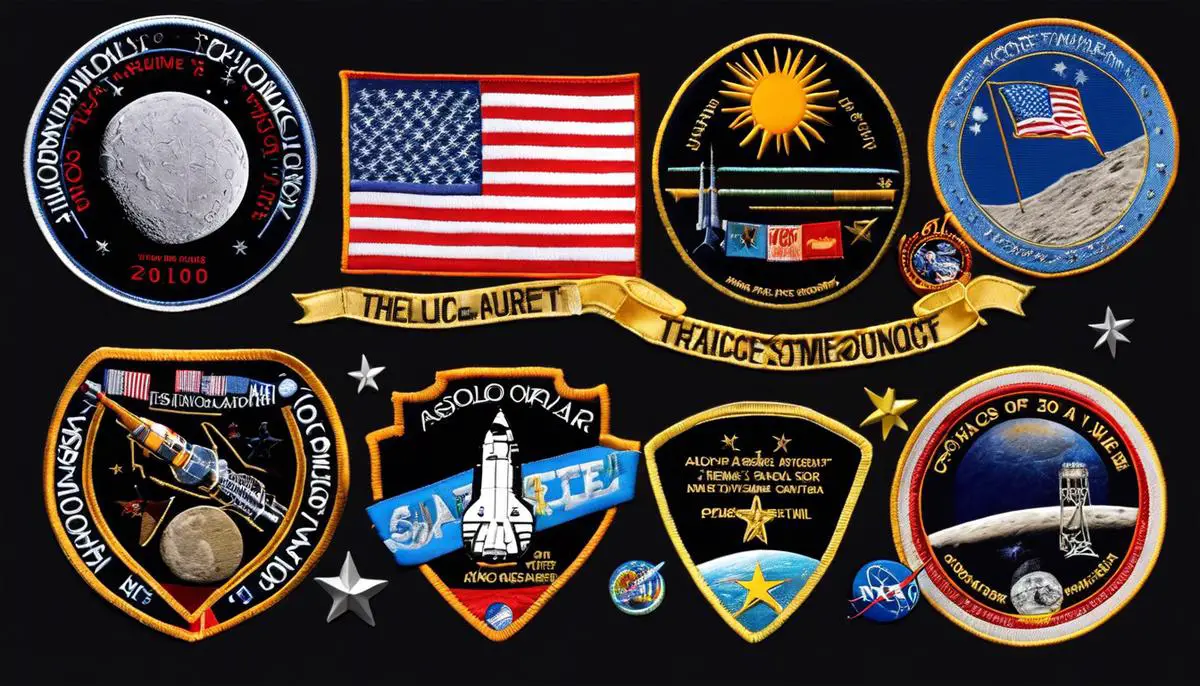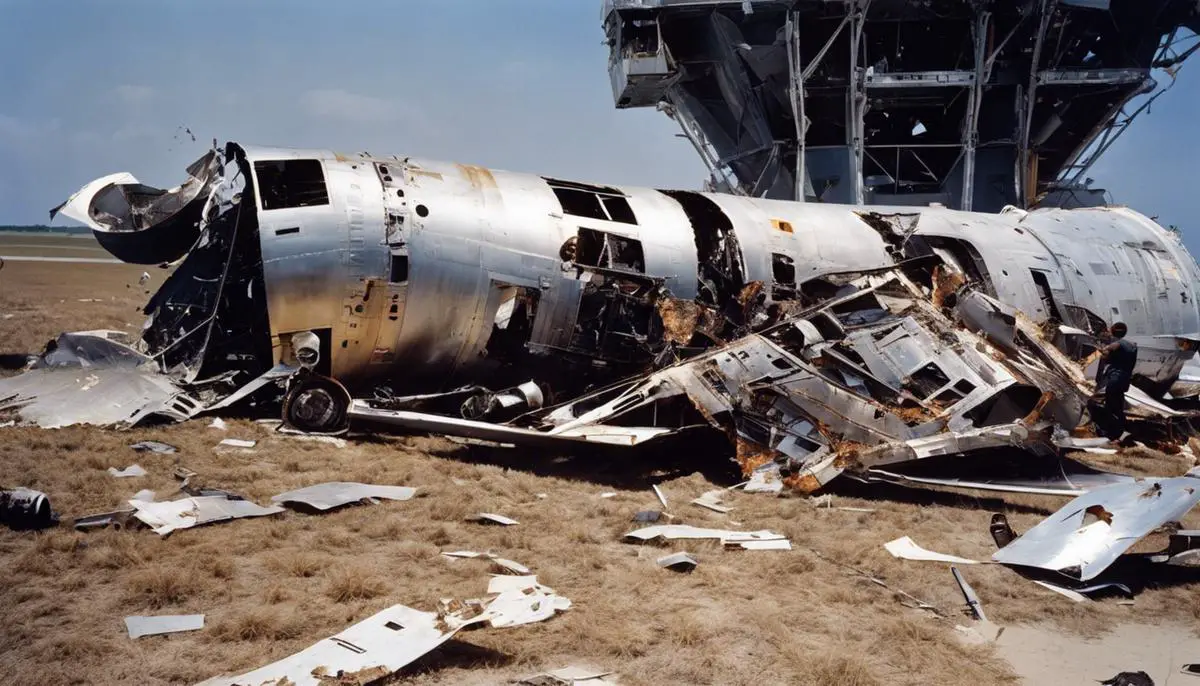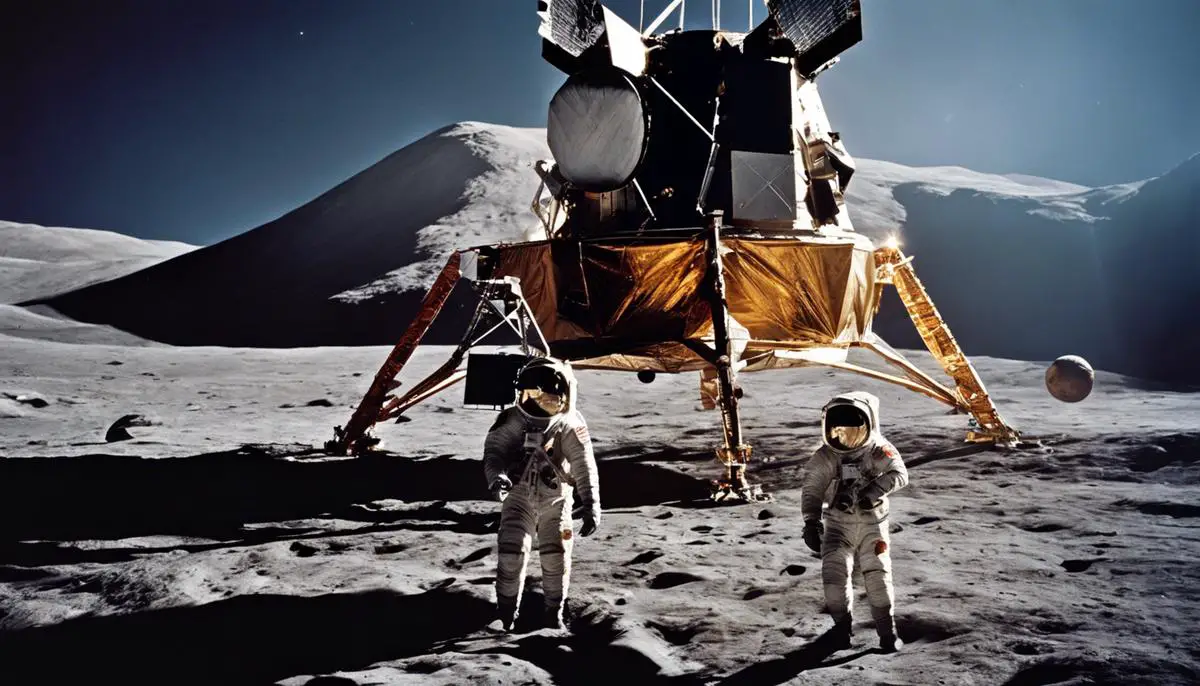The annals of space exploration chronicle an unrelenting quest to conquer the atmospheric frontiers and explore the cosmos. A quest that, while filled with countless feats of ingenuity and bravery, has seen its fair share of tragedies. Among these misfortunes, the Apollo 1 mission occupies a significant chapter. Stoic in the face of tremendous pressure inflicted by the fast-paced space race, NASA launched the Apollo 1 mission as a bold statement of intent and an ambitious stride towards putting a man on the moon. The mission, however, was tragically cut short by an onboard fire that took the lives of its entire astronaut crew. Its reverberations were felt beyond the walls of NASA, rippling through the public domain, international communities, and most intimately, the homes of the lost crew. This exploration delves into the gritty details of the incident, shedding light on key elements such as the mission’s backstory, immediate aftermath, the consequent investigations and their results, and the long-term impacts on the trajectory of space exploration.
Contents
- 1 Background of Apollo 1 mission
- 2 The Incident and Immediate Impact
- 3 Investigation Results and Recommendations
- 4 Long-term Impacts on Space Exploration
- 4.1 10. The flame of introspection ignited by the Apollo 1 mishap fueled an unprecedented emphasis on a dynamic risk management process in space exploration. The review spearheaded by NASA itself, and later reinforced by the US Congress, prompted the organization to maintain a vigilant and meticulous process of inspecting the minutest details of all aspects of a mission, significantly elevating the safety standards.
- 4.2 11. Furthermore, lessons gleaned from the Apollo 1 tragedy led to the widescale application of Failure Modes and Effects Analysis (FMEA) in space exploration – a systematic approach designed to identify potential system failures before they occur. The importance of FMEA has since been underscored in the broader engineering industry, proving its value beyond the realm of space exploration alone.
- 4.3 12. The tragic demise of the talented crew highlighted the need for not only substantive but also procedural enhancements, leading to methodical scrutiny and revision of emergency prelaunch and in-flight procedures. Incorporation of mandatory emergency egress training for astronauts, for instance, was significantly influenced by this legacy of Apollo 1.
- 4.4 13. Subsequent to the Apollo 1 disaster, NASA mandated a higher standard of flame-proofing materials and brought about significant changes in design, particularly in the crucial command module. Enhancements were made to improve the robustness of the spacecraft’s electrical and environmental control systems, thus providing an additional layer of safety to astronauts.
- 4.5 14. Importantly, the Apollo 1 tragedy served as a stark reminder of the potential cost of human error and the need for institutional humility. It underscored that risk in space exploration can seldom be absolutely eliminated, urging the consistent advancement and assimilation of failure analysis and risk reduction techniques.
- 4.6 15. The enduring impact of Apollo 1, in effect, has reverberated through subsequent Apollo missions and the broader domain of space exploration. It gave impetus to a more informed, prepared, and diligent approach, shaping NASA’s philosophy that the lives of astronauts are not to be risked unduly for the sake of exploration.
- 4.7 16. NASA’s ability to rise from the ashes of the Apollo 1 disaster, turning a profound organizational catastrophe into an opportunity for reform and innovation, paved the way for landmark achievements like the Apollo 11 moon landing just two years later. In this sense, one could argue that the lessons and modifications effected by the Apollo 1 tragedy have proven instrumental in solidifying the safety culture of space exploration.
Background of Apollo 1 mission
Unveiling the Motivations and Goals of the Apollo 1 Mission
The incipient phase of the Apollo program, NASA’s insatiable drive to land a man on the lunar surface, can be traced back to the ill-fated Apollo 1 mission. Pivotal for its role in U.S. space history, this mission’s primary objective was to launch an interconnected command and service module (CSM) into Earth’s orbit, setting the course for a future lunar-landing endeavor.
Apollo 1 sought to test the spacecraft’s components under the stressful conditions of space flight with a crew on board. But this mission was not merely a technological endeavor; it carried potent national symbolism, embodying the United States’ commitment to space exploration during the Cold War. In essence, succeeding in this novel form of exploration, in the challenging domain beyond our planet’s atmospheric borders, was also about asserting national prestige and superiority in the international stage.
Apollo 1’s objectives encompassed testing the structural integrity of the CSM; it was the vehicle chosen to transport astronauts to the moon. This evaluation drive was to be the first manned Apollo voyage, testing the spacecraft’s systems under the realistic conditions of a true space voyage. Fundamental among these were the environmental control systems, which are crucial for maintaining stable conditions for life support, as well as the active thermal control system designed to regulate the temperature within the spacecraft.
Additionally, the Apollo 1 mission aimed to assess crew performance with mission tasks, testing the astronauts’ ability to navigate, operate, and troubleshoot complex systems under the inimitable pressures and conditions unique to space exploration. Crew safety, a paramount priority, included tests of the pressure suits and vital spacecraft hardware such as the crew cabin atmosphere.
Apollo 1 sought to generate data that would enable the refining and solidifying of operational procedures for subsequent missions. This extended to procedures related to pre-launch, launch, and in-flight, while also accounting for the integration of ground crew operations. Every aspect of this comprehensive mission worked together, each assessment meticulously designed to etch humanity’s first lunar footsteps.
Tragically, the grand aspirations of Apollo 1 were thwarted by a fatal cabin fire during a pre-launch test on January 27, 1967, claiming the lives of astronauts Gus Grissom, Ed White, and Roger B. Chaffee. Their sacrifice, however mournful, nonetheless drove rigorous safety improvements and process overhauls, molding Apollo into the successful program that eventually fulfilled the audacious dream of landing a human being on the moon.
Thus, the essence of Apollo 1 encapsulates not only ambitious exploration but also the unfaltering determination inherent to space travel, the passionate pursuit to expand the realms of the known and the ventured. Through a constant cycle of aspiration, failure, learning, and resilience, Apollo 1 has imprinted an indelible mark in NASA’s legacy, its ambitions and seemingly insurmountable setbacks forming the tapestry of mankind’s pursuit for the unknown.

The Incident and Immediate Impact
The focus here engenders an inquiry into what was one of NASA’s most tragic incidents – the Apollo 1 mishap, inquiring about the chain of events that were triggered by the accident, what transpired therein, and the ensuing aftermath.
Apollo 1 met its fateful end during a simulated launch test, intended to evaluate the launch complex and the spacecraft’s incorporation. The incident’s abrupt initiation lay in an electrical spark, probably originating from an exposed bundle of wires located in the lower equipment bay. The high-pressure, 100% oxygen environment within the sealed spacecraft fostered an instantaneous surge, blissfully converting the spark into a blazing fire. The resultant deadly conflagration engulfed the cabin interior, culminating in a catastrophic rupture of the command module pressure vessel. In this devastating incident, the prestigious Apollo 1 crew members, astronauts Virgil “Gus” Grissom, Edward White and Roger Chaffee, unfortunately succumbed to asphyxia, while the heat of the fire led to severe physical trauma.
Immediate aftermath saw NASA suspending all crewed Apollo missions. A meticulous investigation was undertaken by NASA, with Frank Borman, astronaut and close associate of the deceased crew, appointed as NASA’s liaison. This was parallelled by an independent examination conducted by the US Congress. The committees identified the blazing accident attributable to varied design and manufacturing faults, such as extensive use of combustible spacecraft materials in a high-pressure, pure oxygen atmosphere, coupled with the spacecraft’s hatch design which was inward opening and complex to operate.
The repercussions of Apollo 1 were notably significant. NASA modified its organizational structure, bringing in a more hierarchical command and control structure with an enhanced emphasis on safety protocols. The harrowing disaster highlighted the inadequacy of the spacecraft’s design and raised valid concerns about the Apollo program’s aggressive timelines. As a result, revisions were designed into the Apollo spacecraft, implementing protective non-flammable materials, developing a swift-release, outward-opening hatch, along with a mixed-gas atmosphere for ground tests.
Despite the heart-rending fatalities associated, the Apollo 1 debacle held an undeniable hand in shaping NASA’s commitment to crew safety. It served as a haunting reminder that invoking rigorous safety measures in design and operations are a non-negotiable requisite for space exploration. The Apollo program soon rose like a Phoenix from the ashes of the Apollo 1 catastrophe, adopting resolution, persistence, and alterations suggested by the investigators. This accident strengthened the determination to achieve the ambitious national goal of landing an astronaut on the moon and demonstrated resilience in the face of adversity.
Nonetheless, the memory of Apollo 1 continues to serve as a somber beacon of warning to the inheritors of the human voyage in space, urging for ensuring safety is not compromised in the astronomical race to explore the cosmos. The accident echoes an eternal reminder of the consequences that can transpire if the balance tilts towards complacency in this high stakes, unforgiving enterprise of human spaceflight.

Investigation Results and Recommendations
Discovering the Cause of the Apollo 1 Accident
A truly in-depth analysis into the Apollo 1 tragedy necessitates the dissection of recorded data, observationals of the craft in situ, and the construction of a deliberate and sequential chain of events leading to the unexpected ignition. From this, the conclusion was inexorable: the ignition source was an electrical arc, exacerbated by myriad elements that led to the unfathomable loss of the astronauts’ lives.
Early reports associated the genesis of the ignition to an electrical permission fault, birthed from an undocumented location inside the lower left-hand section of the equipment bay, underneath the senior pilot’s seat. The precise location remained elusive, but the proof was undeniable – an unprecedented electrical surge earmarked the initiation of this catastrophe.
This conclusion was corroborated by identifying extensive melting and arcing damage on the lower left-hand equipment bay’s wire harness. The power and directional dispersion of the thermal surge implied a rapid projection of incandescent particles onto surrounding, highly flammable materials, sparking an uncontrollable chain of combustion.
Isolating Apollo 1’s Fateful Recommendations
In the aftermath of Apollo 1, NASA found itself under incessant scrutiny from an array of external bodies, with a plethora of investigative committees surfacing to assess and conclude upon the tragedy. Their pivotal recommendations were twofold: an overwhelming overhaul of design and manufacturing procedures, and a comprehensive revision of astronaut safety systems.
Unearthing severe design and manufacturing defects throughout Apollo 1 revealed an alarming lack of drafting and screening processes, leading to components and materials unsuitable for human-rated spaceflight. Further, the spacecraft was inundated with combustible materials such as nylon, and was confined by an inward-opening hatch, making rapid escape impossible.
The second recommendation emphatically insisted that any craft, containing personnel, must incorporate a rapid, unobstructed and comprehensive escape path. This came in direct response to the immovable, inward-opening hatch which consigned the Apollo 1 crew to their tragic fate.
Post-Apollo 1: NASA’s Commitment and Progression to Crew Safety
In stark response to the Apollo 1 catastrophe, NASA swore an immutable commitment to astronaut safety. Reflecting this ethos, key re-designs were affected swiftly, bearing witness to the emergence of outward-opening hatches, minimized cabin flammable materials and a significant enhancement in fireproofing. Moreover, NASA instigated comprehensive procedural reviews, entailing once optional, a now mandatory, emergency egress training for astronauts.
Much like the mythical Phoenix, Apollo rose from the Ashes of its namesake, bringing about a powerful era of innovation, exploration, and – crucially – safety. Thus, the Apollo 1 disaster stands as a sobering testament to human achievement in the face of adversity, reminding us of the exacting costs of reaching for the stars — each hard-won lesson preserved in indelible ink on the fabric of our relentless pursuit of the unknown.

Long-term Impacts on Space Exploration
10. The flame of introspection ignited by the Apollo 1 mishap fueled an unprecedented emphasis on a dynamic risk management process in space exploration. The review spearheaded by NASA itself, and later reinforced by the US Congress, prompted the organization to maintain a vigilant and meticulous process of inspecting the minutest details of all aspects of a mission, significantly elevating the safety standards.
11. Furthermore, lessons gleaned from the Apollo 1 tragedy led to the widescale application of Failure Modes and Effects Analysis (FMEA) in space exploration – a systematic approach designed to identify potential system failures before they occur. The importance of FMEA has since been underscored in the broader engineering industry, proving its value beyond the realm of space exploration alone.
12. The tragic demise of the talented crew highlighted the need for not only substantive but also procedural enhancements, leading to methodical scrutiny and revision of emergency prelaunch and in-flight procedures. Incorporation of mandatory emergency egress training for astronauts, for instance, was significantly influenced by this legacy of Apollo 1.
13. Subsequent to the Apollo 1 disaster, NASA mandated a higher standard of flame-proofing materials and brought about significant changes in design, particularly in the crucial command module. Enhancements were made to improve the robustness of the spacecraft’s electrical and environmental control systems, thus providing an additional layer of safety to astronauts.
14. Importantly, the Apollo 1 tragedy served as a stark reminder of the potential cost of human error and the need for institutional humility. It underscored that risk in space exploration can seldom be absolutely eliminated, urging the consistent advancement and assimilation of failure analysis and risk reduction techniques.
15. The enduring impact of Apollo 1, in effect, has reverberated through subsequent Apollo missions and the broader domain of space exploration. It gave impetus to a more informed, prepared, and diligent approach, shaping NASA’s philosophy that the lives of astronauts are not to be risked unduly for the sake of exploration.
16. NASA’s ability to rise from the ashes of the Apollo 1 disaster, turning a profound organizational catastrophe into an opportunity for reform and innovation, paved the way for landmark achievements like the Apollo 11 moon landing just two years later. In this sense, one could argue that the lessons and modifications effected by the Apollo 1 tragedy have proven instrumental in solidifying the safety culture of space exploration.
As such, Apollo 1 stands as a haunting yet poignant testament of sacrifice, compelling continual advancement in astronaut safety and the pursuit of a more comprehensive understanding of space exploration. It is a significant chapter in the narrative of humanity’s quest for cosmic knowledge, shaping a legacy that inspires prudence, adaptability, and an unwavering commitment toward safe space voyages. Its echoes, thus, linger indomitably in the spirit of mankind’s journey beyond the familiar confines of our blue planet.

The calamitous Apollo 1 mission etched a permanent mark on the face of space exploration. The pathos of its tale resonates even today — a story of ambition tainted by tragedy. Yet, in its wake lies an enduring legacy of lessons learned, safety improvements, and an impetus for change. The meticulous investigation, the resultant recommendations and systematic amendments in future Apollo missions serve as a testament to mankind’s resolve to continuously learn, adapt, and grow. Rooted in the ashes of the Apollo 1 disaster, the principle of ‘safety first’ took on a new life and emerged as the cornerstone of space exploration protocols. Consequently, it spurred humanity’s capability to explore fully the mysteries of our universe. It is through this lens of transformative resilience that the Apollo 1 mission shines in the chronicles of space exploration history, not as a symbol of failed ambition, but as a catalyst for critical advancements and relentless resolve in our quest to reach beyond the skies.
